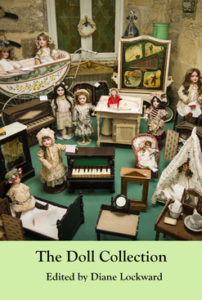This past March I attended the 5 College Queer Gender & Sexuality Conference at Hampshire College. One of the best workshops was “Sex-Negativity Never Happened”, led by Skramz Geist, a radical philosophy professor at St. Mary’s College of Maryland. We talked about how the “sex-positive” norm in queer communities can be exploited to push people’s sexual boundaries or create an uncomfortably sexualized environment. A theme that emerged was that no community rules are immune to subversion by a determined predator, whether they’re the consent and communication scripts of queer and kink spaces, or the rigid sexual boundaries in conservative churches, where I once sought protection from an emotionally numb and risky hookup culture. I read very little theology anymore, because it failed to perform what for me was its prime function: identifying safe people and creating safe spaces.
Very few hits come up when I Google “compulsory sexuality”, which is sad because this concept would have taught my 20-year-old self that feminism was about more than the right to get drunk at frat parties and have abortions. This 2010 review of Andrea Dworkin’s Right-Wing Women, from the feminist blog Fannie’s Room, provided a rare moment of validation for my motives in becoming a Young Republican:
Dworkin argues that, for good reason, Rightwing women fear the Left. The Left of the sixties was “a dream of sexual transcendence…. It was- for the girls- a dream of being less female in a world less male; an eroticization of sibling equality, not male domination” (91). What this meant in practice, however, was that it essentially freed men to fuck women “without bourgeois constraints” (91). What this meant for women was “an intensification of the experience of being sexually female- the precise opposite of what these girls had envisioned for themselves….freedom for women existed in being fucked more often by more men, a sort of lateral mobility in the same inferior sphere” (93). The Left, that is, continued to construct women as sex, while men continued to be constructed as the Doers Of Important Things.
Further, “sexual liberation” created an expectation that the sexually liberated were ready for sex at any time, effectively negating the concept of consent. Those who were not ready for sex were considered “repressed,” not liberated. For women, for whom pregnancy was sometimes an outcome of this sex free-for-all and for whom abortion was illegal, the consequences of sex were higher than for men. Rightwing women feared sexual liberation as it meant unfettered male sexual access to women, and possibly pregnancy, without the expectation of male support via traditional marriage.
This scenario was all too true for the many women who were mentored and sexually harassed by prominent theologian John Howard Yoder in the 1970s-90s, as history professor Rachel Waltner Goossen details in “Mennonite Bodies, Sexual Ethics”, a recent essay from the Journal of Mennonite Studies, reprinted at the sexual abuse survivor blog Our Stories Untold. Yoder is still widely cited and revered for his theology of pacifism, despite brave dissenters who point out that we should be skeptical of nonresistance preached by a sexual predator. Goossen observes:
For several decades, through the 1970s and 1980s, Yoder approached women with sexual invitations and intimidating behavior at the seminary, at academic and church conferences, and in homes, cars, and gathering places across the U.S., Canada, and a host of international settings. The women’s experiences varied widely. While each was acquainted with Yoder in some way, most of these women were not known to one another nor aware of Yoder’s sexual aggressiveness toward others. (One woman, married and much younger than Yoder, whom he surprised in the mid- 1970s with sexualized physical touching and who reacted with instant rebuke, later remembered the incident as deeply troubling: “It messes with the mind. I wondered, am I special to him? Is he lonely?”10)
Yoder justified his sexual approaches to women as theologically driven. He solicited help from female students and others, describing his entreaties as part of an “experiment” in sexual ethics in which he and a circle of “sisters” tested ideas about sexual intimacy outside marriage. For approximately eight years, over the objections of his supervisor at the seminary, president Marlin Miller, Yoder offered biblical justifications for his behavior based on Jesus’ ministry to women and what Yoder termed “the freedom of the Gospel.”11 Yoder argued that his ministrations to women were potentially therapeutic, and although he lacked formal training in psychological counseling, maintained that he wanted to help women overcome feelings of taboo. He intended to “defang” (or tame) “the beast,” he said, helping Christians to reject notions of sexuality as “a beast or a slippery slope which is … uncontrollable.”12
Yoder’s speculative project, arising as part of the sexual revolution of the 1960s and ’70s, coincided with widening societal expectations about consensual sex. Although sexualized violence against women in the United States did not intensify markedly during the sexual revolution, one leading historian of the era notes that “In the new sexual order, the standard for consent had to be renegotiated. Why would a woman say no if sex presumably resulted in no harm? And who would believe that a woman had withheld consent, given new expectations of participation in the sexual revolution?”13 At a historical moment when lines were blurring about what constituted permissible sex, Yoder exploited notions that loosening sexual boundaries portended no harm.
The historian being cited in footnote 13 is Estelle Freedman, Redefining Rape: Sexual Violence in the Era of Suffrage and Segregation (Cambridge: Harvard University Press, 2013). Hat tip to @GrumpyTheology for this article. Follow her for truth and cat pictures.
Consent and Altsex Culture is another recent gem of a post from Thing of Things, a funny and thought-provoking blog about philosophy, neurodivergence, gender, and nerdy special interests.
…[I]n our culture sex-positivity has a distressing tendency to collapse into compulsory sexuality.
What happens in a lot of cases is something like this: in conventional patriarchal culture, there are people women are supposed to fuck (their husbands) and people women are not supposed to fuck (everyone else). There is a socially legitimate reason for a woman to say ‘no’ to sex to anyone who isn’t her husband. And while there might not be much concept that women can say ‘no’ to sex with their husbands (remember that marital rape only became illegal in every US state in the nineties), most husbands are not rapists, genuinely love and care about their partners, and have no desire to have sex with their wife when she doesn’t want sex. While this is a terrible system in a lot of respects, it did reduce the harm of compulsory sexuality for many women.
Unfortunately, in this system, the natural way to do sex-positivity is to expand the set of people women are supposed to fuck. It is limiting to only have one person you’re supposed to fuck! Now you are supposed to fuck all your friends, or all the people in this intentional community, or everyone! Isn’t that great? We’re helping!
And, of course, if you’re supposed to have sex with a lot more people, then you’re much more likely to have sex with a rapist, or with someone who grew up in a culture that doesn’t give a shit about consent and who doesn’t have any reason to care about your emotional well-being. You’re a stranger, after all.
The worst excesses of the free love movement in the sixties birthed radical feminism, which instituted the rule that sex that one person involved did not want is rape. Most alternative sexuality communities seem to work under a similar rule today. This is a serious improvement, which I am not going to criticize.
However, I worry that a lot of alternative sexuality culture lends itself well to compulsory sexuality in more subtle ways…
…How can we fix this problem? I think part of the solution is just talking about it and trying to be aware of the pressures in our communities and the way that they make some people feel unwelcome. Another part is to explicitly work on including not just the sluts but the prudes in sex positivity– not just the people who want sex more or in different ways than society approves of, but the people who want sex less or don’t like some of the socially accepted kinds of sex. (Not, of course, that these are mutually exclusive.) And I do wonder if there are any simple changes we could make in communities dominated by kinky, poly, slutty, cuddle-prone etc. people to make them more welcoming to vanilla, asexual, monogamous, low-libido, not-in-favor-of-cuddling-strangers etc. people, without sacrificing our own needs and values.
Ozy’s blog is an unusual place: the comments are intelligent, and trolling is swiftly stopped. The ones below this post are worth a read. And of course feel free to share your own experiences and suggested solutions in my comments box too.


